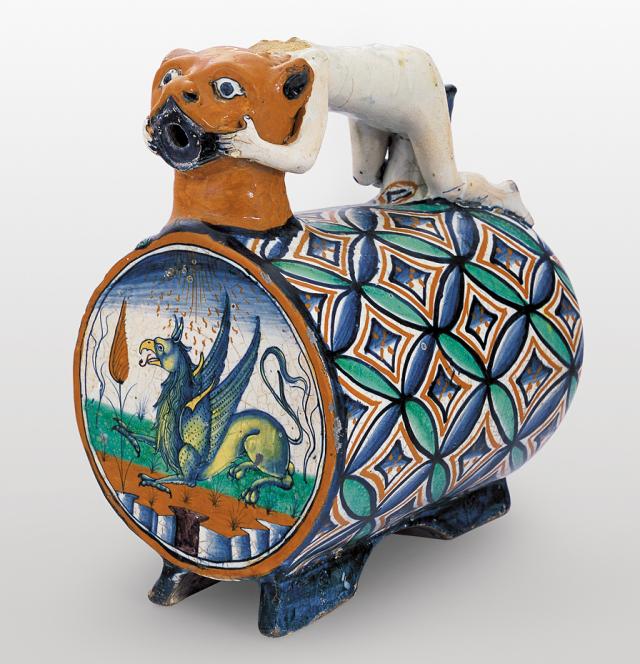Acquamanile
Palazzo Baldeschi Museum

ceramic
1490-1500
This acquamanile (water container for handwashing at mealtimes) has a cylindrical shape with four intentionally flat feet. The rear part is rounded into a button-like “tail”. The upper section features a handle in the shape of an acephalous figure who is kneeling to hold the head of an animal that forms the pouring beak. Between the figure’s feet is the filling hole. Lower down. another corked opening would have been for emptying the vessel. The front panel features a painting of a seated gryphon from whose claw a palm frond-like inflorescence rises. This zoomorphic, cylindrically-shaped pouring vessel has its origins in Medieval European and Islamic metal counterparts whose precursors can be traced to ancient times (before 1000 B.C.).
It has been suggested by some experts that this acquamanile was inspired by ceramic traditions originating in Tuscany and Faenza; others posit that the colours and design of the gryphon panel situate it in much closer proximity to late 15th century ceramic productions from Deruta. Comparison with hallmark on an acquamanile from a London collection suggests the gryphon may have had a heraldic or other significance. If this were to be the case, it seems likely that there is some connection with the fact that the gryphon has been the emblem of the city of Perugia since the 13th century.